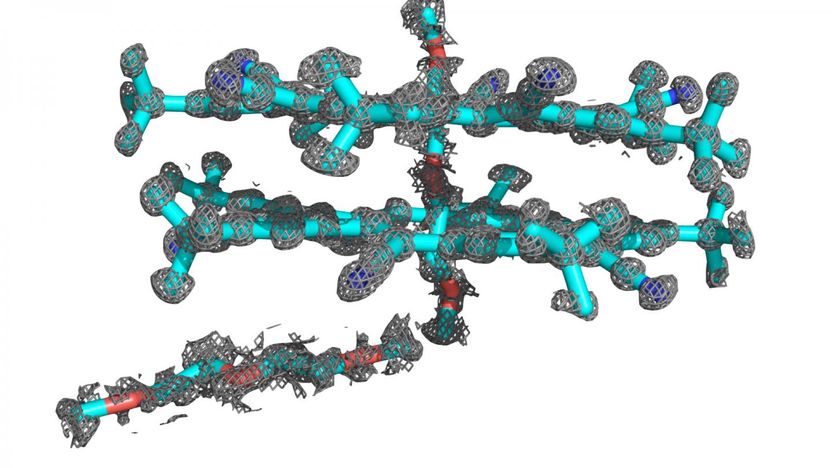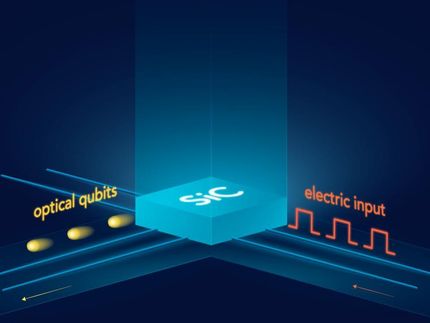Course set to overcome mismatch between lab-designed nanomaterials and nature's complexity
Cells and the machinery they encase are soft matter -- shape-shifting multicomponent systems with an overwhelming richness of forms. But, these squishy packages are hard targets for potential therapeutic and diagnostic applications that exploit nanomaterials, from quantum dots that light up specific tissues to nanocages carrying drug payloads.
The problem, according to a team of 12 experts from five countries, stems from a "mismatch" between the structural complexity that nature selected over billions of years of evolution and the minimalist designs of synthetic nanomaterials, optimized for lab conditions.
Advances in nanotechnology have made it possible to control the size, shape, composition, elasticity and chemical properties of laboratory-made nanomaterials. Yet many of these materials do not to function as expected in the body. The team homes in on biomembranes -- the gatekeeping bilipid-layers and proteins surrounding cells. They explore the barriers a synthetic nanomaterial must breach to enter a cell and achieve its intended purpose.
The team's consensus perspective on designing next-generation "smart" nanomaterials for biological applications originated in discussions at a recent workshop on biomaterials and membranes. The annual workshop is organized by the Smart Nano-objects for Alteration of Lipid bilayers (SNAL) Initial Training Network, funded by the European Union's Seventh Framework Program.
The authors emphasize that introducing synthetic nanomaterials into biological environments can trigger unexpected interactions and unpredictable behaviors, hallmarks of soft-matter systems. Proteins bind to nanoscale objects forming protein coronas that can hinder the expected therapeutic effect, alter the membrane signaling processes, induce an immune response, or trigger other unwanted reactions.
Similarly, theoretical studies and simulations assume perfectly uniform nanomaterials with idealized properties, but real nanomaterials may vary in surface roughness and size. Additionally, they may cluster when introduced to the body. Even slight variations can lead to different interactions in biological media.
"The challenges we pose are intended to serve as guidelines that will help the field tackle the next degrees of biological complexity, difficulties and open questions," said Marco Werner, at the Universitat Rovira i Virgili in Spain. "If theoretical concepts, membrane models, and cell experiments move closer together and encourage a common language, we will also improve our ability to predict whether the materials we design will achieve their intended purpose."
Original publication
Marco Werner, Thorsten Auth, Paul A. Beales, Jean Baptiste Fleury, Fredrik Höök, Holger Kress, Reid C. Van Lehn, Marcus Müller, Eugene P. Petrov, Lev Sarkisov, Jens-Uwe Sommer, Vladimir A. Baulin; "Nanomaterial interactions with biomembranes: Bridging the gap between soft matter models and biological context"; Biointerphases; 2018
Original publication
Marco Werner, Thorsten Auth, Paul A. Beales, Jean Baptiste Fleury, Fredrik Höök, Holger Kress, Reid C. Van Lehn, Marcus Müller, Eugene P. Petrov, Lev Sarkisov, Jens-Uwe Sommer, Vladimir A. Baulin; "Nanomaterial interactions with biomembranes: Bridging the gap between soft matter models and biological context"; Biointerphases; 2018
Topics
Organizations
Other news from the department science

Get the chemical industry in your inbox
By submitting this form you agree that LUMITOS AG will send you the newsletter(s) selected above by email. Your data will not be passed on to third parties. Your data will be stored and processed in accordance with our data protection regulations. LUMITOS may contact you by email for the purpose of advertising or market and opinion surveys. You can revoke your consent at any time without giving reasons to LUMITOS AG, Ernst-Augustin-Str. 2, 12489 Berlin, Germany or by e-mail at revoke@lumitos.com with effect for the future. In addition, each email contains a link to unsubscribe from the corresponding newsletter.
Most read news
More news from our other portals
Last viewed contents




























































